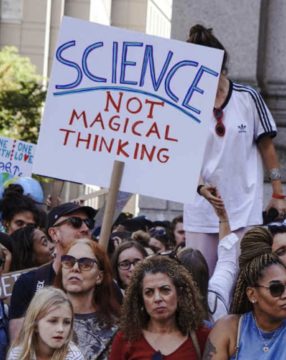Poem in the Manner of Frank O’Hara
Is it true you started weeping
when you came across that picture
of John Ashbery in Water Mill?
Yes well, I weep all the time,
not because I am sad but because
everything eventually meets
everything else. Isn’t it gratifying?
Anyway it wasn’t about John’s clever
eyebrows and I am having a perfectly good time.
On Sunday I saw a Japanese film about family, then
walked down Houston Street in search of something
left over.
Norma wanted to work, which disappointed me.
Come walk the streets with me, Norma!
Have those dirty martinis you like! Am I not shinier than your manuscripts?
At Milano’s, a group of Venezuelans watched the Super Bowl,
it didn’t seem to matter much. The man
next to me was a pilot, Monday he was on call for a flight to Ohio.
I’ve never been to Ohio, but I showed him a poem by Frank O’Hara
and showed the bartender too because I wanted to make him cry.
He was charming and took several
cigarette breaks. In the spring,
he’ll be playing Macbeth at a theater
right by my old apartment on Rivington Street.
Doesn’t it make you wild with joy? The clicks and entertainments?
I’m trying to explain about John Ashbery,
who gave a talk at NYU a few years ago
and I think shook my hand.
He wasn’t dashing anymore, and I won’t be either
one day. Other than that his face was the same,
clever and unyielding like a clean, steel hammer you can count on.
I was there with a friend I don’t speak to these days but I’m grateful for the occasion.
When Ashbery died, I was in Woodstock not too far away
writing my more laborious poems, fucking a twenty-two year old I liked
because he admired me.
I don’t need to explain myself, do I?
This is my youth, isn’t it?
I am filled with anxieties and I don’t want to spend my days fluffing my wings
like a sidewalk pigeon, waiting for crumbs.
At least the streets are warm for February.
If I get dressed and ready now I’ll still make it in time
to meet some sharp and begging stranger for a beer.
by Alex Sarrigeorgiou
from Bodega Magazine, July 2021

 Marcus du Sautoy was around 13 when the exploits of a 19th-century German math genius changed his life. According to legend, the young Carl Friedrich Gauss was asked to calculate the sum of the numbers from one to 100, but instead of adding up the digits one by one, he realized 50 pairs of numbers (one plus 100, two plus 99, and so on) all equaled 101. So, he simply multiplied 50 times 101 and dropped the correct answer, 5,050, on his teacher’s desk.
Marcus du Sautoy was around 13 when the exploits of a 19th-century German math genius changed his life. According to legend, the young Carl Friedrich Gauss was asked to calculate the sum of the numbers from one to 100, but instead of adding up the digits one by one, he realized 50 pairs of numbers (one plus 100, two plus 99, and so on) all equaled 101. So, he simply multiplied 50 times 101 and dropped the correct answer, 5,050, on his teacher’s desk. Prof Crowther, who grew up in Prestatyn, Flintshire, is a professor of ecosystem ecology at ETH Zurich University in Switzerland and also chairs an advisory board for the United Nations on nature restoration. He warned blanket planting of trees was “hugely threatening”. “This is not about offsetting your guilt, that would be an absolutely devastating step for climate change,” he said. Speaking at
Prof Crowther, who grew up in Prestatyn, Flintshire, is a professor of ecosystem ecology at ETH Zurich University in Switzerland and also chairs an advisory board for the United Nations on nature restoration. He warned blanket planting of trees was “hugely threatening”. “This is not about offsetting your guilt, that would be an absolutely devastating step for climate change,” he said. Speaking at  Until recently, Fran Lebowitz was not well known in Britain. The release this year of Martin Scorsese’s Netflix series Pretend It’s a City, however, has made her something of a household name here. A veritable Franbase has now formed in the UK, giving rise to online appearances, a tour scheduled for next year and the first publication in this country of The Fran Lebowitz Reader (which was originally published in the United States in 1994). The Lebowitz on the dust jacket is one fans of the series will recognize: the seasoned New Yorker with gorgeous overcoat, horn-rimmed sunglasses and cigarette, as famous for her writer’s block as for her wit. Between the covers, we meet the artist as a young woman. The Reader reproduces her only two essay collections: Metropolitan Life (1978) and Social Studies (1981), which in turn reproduce her magazine pieces of that era.
Until recently, Fran Lebowitz was not well known in Britain. The release this year of Martin Scorsese’s Netflix series Pretend It’s a City, however, has made her something of a household name here. A veritable Franbase has now formed in the UK, giving rise to online appearances, a tour scheduled for next year and the first publication in this country of The Fran Lebowitz Reader (which was originally published in the United States in 1994). The Lebowitz on the dust jacket is one fans of the series will recognize: the seasoned New Yorker with gorgeous overcoat, horn-rimmed sunglasses and cigarette, as famous for her writer’s block as for her wit. Between the covers, we meet the artist as a young woman. The Reader reproduces her only two essay collections: Metropolitan Life (1978) and Social Studies (1981), which in turn reproduce her magazine pieces of that era. It’s been more than
It’s been more than With the publication in the United States of his best-selling “Sapiens” in 2015, the Israeli historian and philosopher Yuval Noah Harari arrived at the top rank of public intellectuals, a position he consolidated with “Homo Deus” (2017) and “21 Lessons for the 21st Century” (2018). Harari’s key theme is the idea that human society has largely been driven by our species’s capacity to believe in what he calls fictions: those things whose power is derived from their existence in our collective imaginations, whether they be gods or nations; our belief in them allows us to cooperate on a societal scale. The broad sweep of Harari’s writing, which encompasses the prehistoric past and a dark far-off future, has turned him into a bit of a walking inkblot test. “The general misunderstandings of me,” says Harari, 45, co-author of the recently published “Sapiens: A Graphic History, Volume 2” (the latest in a series of graphic-novel adaptations of his work), “are that I’m the prophet of doom and then there’s this opposite view that I think everything is wonderful.” Both, of course, might be true. “Once the books are out, the ideas are out of your hands,” he says.
With the publication in the United States of his best-selling “Sapiens” in 2015, the Israeli historian and philosopher Yuval Noah Harari arrived at the top rank of public intellectuals, a position he consolidated with “Homo Deus” (2017) and “21 Lessons for the 21st Century” (2018). Harari’s key theme is the idea that human society has largely been driven by our species’s capacity to believe in what he calls fictions: those things whose power is derived from their existence in our collective imaginations, whether they be gods or nations; our belief in them allows us to cooperate on a societal scale. The broad sweep of Harari’s writing, which encompasses the prehistoric past and a dark far-off future, has turned him into a bit of a walking inkblot test. “The general misunderstandings of me,” says Harari, 45, co-author of the recently published “Sapiens: A Graphic History, Volume 2” (the latest in a series of graphic-novel adaptations of his work), “are that I’m the prophet of doom and then there’s this opposite view that I think everything is wonderful.” Both, of course, might be true. “Once the books are out, the ideas are out of your hands,” he says. The pain struck suddenly in Venice.
The pain struck suddenly in Venice. One day in 2010, when oncologist Paul Muizelaar operated on a patient with glioblastoma—a brain tumor infamous for its deathly toll—he did something shocking. First, he cut the skull open and carved out as much of the tumor as he could. But before he replaced the piece of skull to close the wound, he soaked it in a solution containing Enterobacter aerogenes,1 bacteria found in feces. For the next month, the patient lay in a coma in an intensive care unit battling the bacteria he was infected with—and then one day a scan of his brain no longer showed the distinctive signature of glioblastoma. Instead, it showed an abscess, which, given the situation, Muizelaar deemed a positive development. “A brain abscess can be treated, a glioblastoma cannot,”
One day in 2010, when oncologist Paul Muizelaar operated on a patient with glioblastoma—a brain tumor infamous for its deathly toll—he did something shocking. First, he cut the skull open and carved out as much of the tumor as he could. But before he replaced the piece of skull to close the wound, he soaked it in a solution containing Enterobacter aerogenes,1 bacteria found in feces. For the next month, the patient lay in a coma in an intensive care unit battling the bacteria he was infected with—and then one day a scan of his brain no longer showed the distinctive signature of glioblastoma. Instead, it showed an abscess, which, given the situation, Muizelaar deemed a positive development. “A brain abscess can be treated, a glioblastoma cannot,”  “I’m a storyteller” is a common self-description for virtually everyone in the film industry these days, from directors and scenarists to publicists and marketers. The phrase is a quintessential humble-brag. It carries a sense of modesty: “I may have a profoundly intricate knowledge of my craft, but at heart I’m no different from the people spinning a good yarn for their kids.” But it also holds a whiff of epic continuity, placing the speaker in a line that reaches back to Homer, and beyond that to the nameless bards who first narrativized our species into civilization. All to say: the phrase has passed through ubiquity to become an increasingly mocked cliché. Which is why it was so refreshing to hear the French director Leos Carax say in a recent interview with the
“I’m a storyteller” is a common self-description for virtually everyone in the film industry these days, from directors and scenarists to publicists and marketers. The phrase is a quintessential humble-brag. It carries a sense of modesty: “I may have a profoundly intricate knowledge of my craft, but at heart I’m no different from the people spinning a good yarn for their kids.” But it also holds a whiff of epic continuity, placing the speaker in a line that reaches back to Homer, and beyond that to the nameless bards who first narrativized our species into civilization. All to say: the phrase has passed through ubiquity to become an increasingly mocked cliché. Which is why it was so refreshing to hear the French director Leos Carax say in a recent interview with the  However reductive it may be to call the painter Bob Thompson the Jean-Michel Basquiat of the 1960s, the comparison is inescapable.
However reductive it may be to call the painter Bob Thompson the Jean-Michel Basquiat of the 1960s, the comparison is inescapable. The characters of
The characters of  Otto Celera 500L, it’s one that catches the eye. It looks like no other plane out there, and for a good reason: unique aerodynamics.
Otto Celera 500L, it’s one that catches the eye. It looks like no other plane out there, and for a good reason: unique aerodynamics. Isaiah Berlin understood the parable of the fox and the hedgehog – ‘the fox knows many things, but the hedgehog knows one big thing’ – to illustrate two styles of thinking. Hedgehogs relate everything to a single vision, a universally applicable organising principle for understanding the world. Foxes, on the other hand, embrace many values and approaches rather than trying to fit everything into an all-encompassing singular vision.
Isaiah Berlin understood the parable of the fox and the hedgehog – ‘the fox knows many things, but the hedgehog knows one big thing’ – to illustrate two styles of thinking. Hedgehogs relate everything to a single vision, a universally applicable organising principle for understanding the world. Foxes, on the other hand, embrace many values and approaches rather than trying to fit everything into an all-encompassing singular vision. What is it about Poe that grips the popular imagination so, like the medieval Iron Shroud shrinking inward and threatening to crush the narrator of
What is it about Poe that grips the popular imagination so, like the medieval Iron Shroud shrinking inward and threatening to crush the narrator of